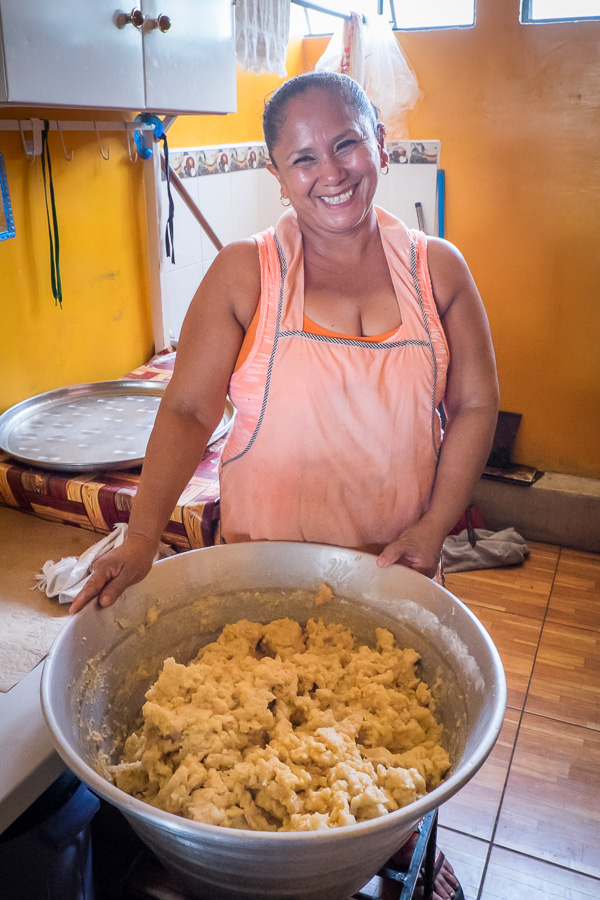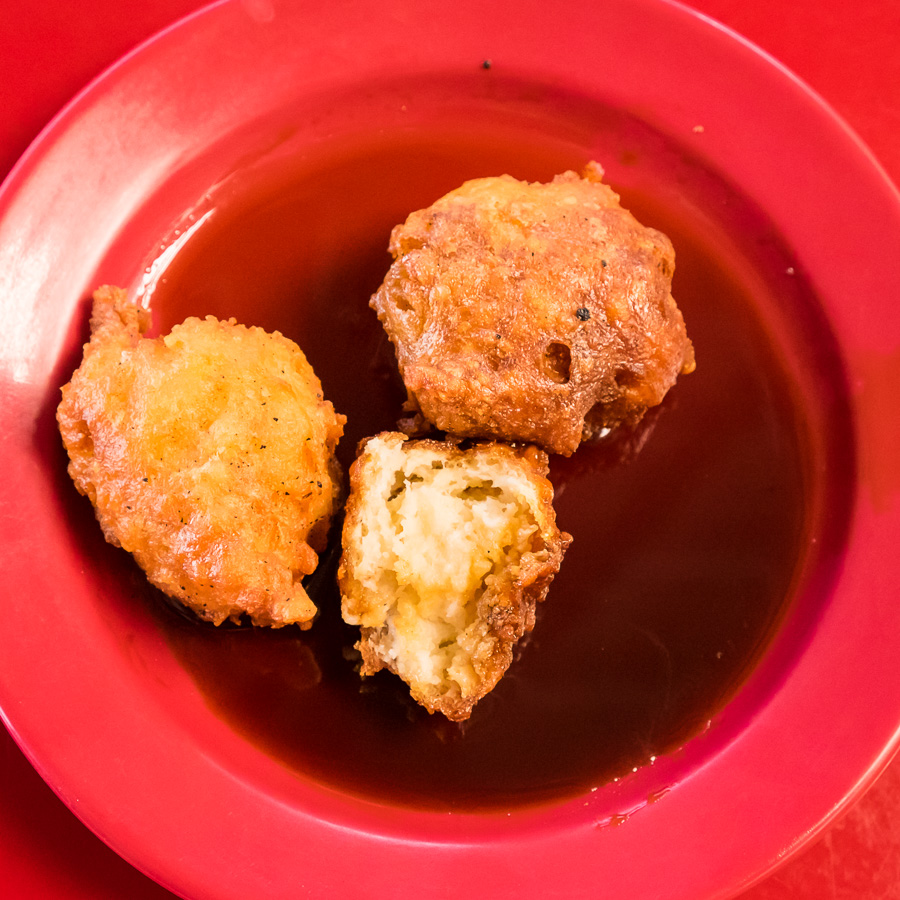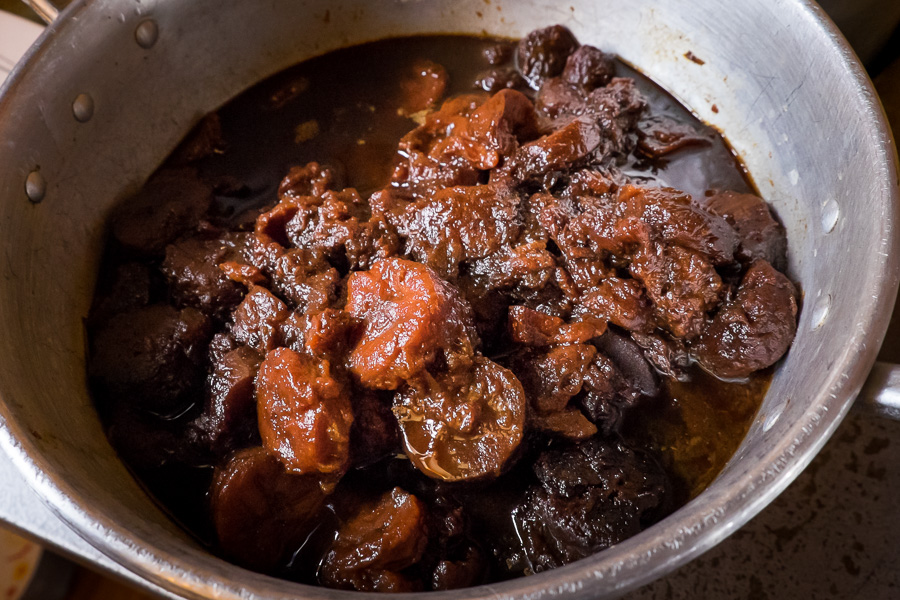Once I’d finished making (and eating) pupusas on my gastronomy tour with Sapito Tours in Suchitoto, Luis introduced me to Cecilia – another of the women who has a small comedor in the food court of the Municipal Market. Yes, Suchitoto has a very large food court – usually something you only find in the big malls in the larger cities. Very random!

Cecilia’s specialty is Salvadoreño desserts, and although I didn’t get to have a hand (literally) in making the different dishes, she was great at explaining to me what they all were and how they were made.
Buñuelos / Nuégados
Cecilia was arms deep mixing the dough for Buñuelos (or Nuégados) when we arrived so we started there. Essentially what she’s mixing is bread flour (though they are also commonly made with yuca – a kind of tuber), eggs, baking powder and a little oil.

Once its mixed well, she forms it into little balls and fries them. So it’s kind of like a donut. These are then drizzled (sometimes drowned) with miel de panela, a syrup made by combining unprocessed brown sugar made from sugar cane juice with water.

I have to admit, these were my favourites of the desserts 🙂

Although I had tried Buñuelos in Nicaragua, the syrup here was much, much stronger, and its usual to have the next dessert with the Buñuelos to cut through the sugar somewhat.
Chilate
Chilate is a hot drink that accompanies all these super-sweet desserts. Its base is atól which is made of toasted corn (yes, you can turn corn into a drink) and, in this case, Cecilia adds “fat peppercorns” and star anise.

It tasted a lot like chai actually and I couldn’t taste the corn at all (unlike some other corn-based drinks I’ve tried in Central America). Not sure it is strictly necessary for the enjoyment of Buñuelos (there is not that much syrup involved with them), but definitely would have helped when I tried the next 2 desserts!
Plátano con miel
This is an easy one – it’s essentially banana that has been cut into chunks and boiled with the above miel de panela.

It is super, super-sweet and you can barely taste the banana at all – the dominant flavour is definitely the miel, hence why you need the Chilate to cut through it. Definitely needed a smaller portion of this one (see below)!
Torrejas
The last dessert I tried was Torrejas. In this recipe, you take a special type of bread (Cecilia bought hers elsewhere in the market, you can also use a type of butter cake) – cut it into pieces, soak it in well-beaten egg with a bit of baking powder and fry. Then you layer all the pieces in a casserole dish, pour over the miel de panela and make sure it soaks through well.

In other words, it’s kind of like French Toast, but that has also been soaked in the syrup. And again, the syrup is much, much stronger than you would typically get with French Toast – you really need the Chilate to cut through it. If not, the interior of your mouth starts to feel like its puckering due to all the sugar! I would recommend eating less than the below in one sitting!

So a fabulous excursion through several Salvadoreño desserts – even if my mouth felt like a prune at the end of it! Had a wonderful time with Cecilia who was very talkative and keen to answer all my questions and explain the different processes to me. A huge portion of each dessert cost 50 US cents – so US$2 all up! But I also gave her a big tip to thank her for taking the time out for me.